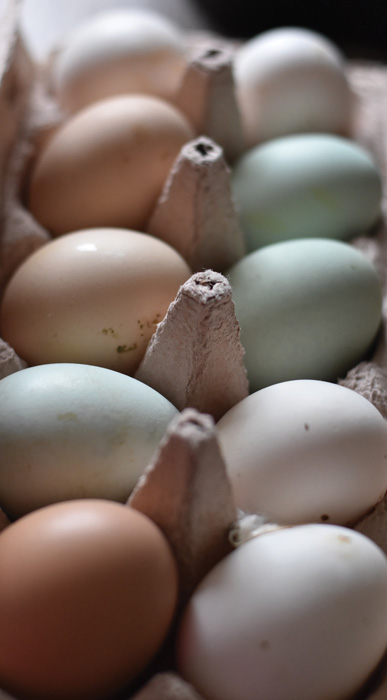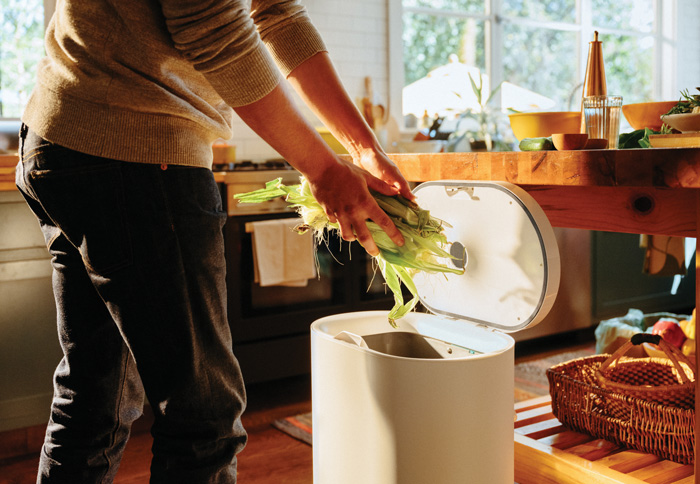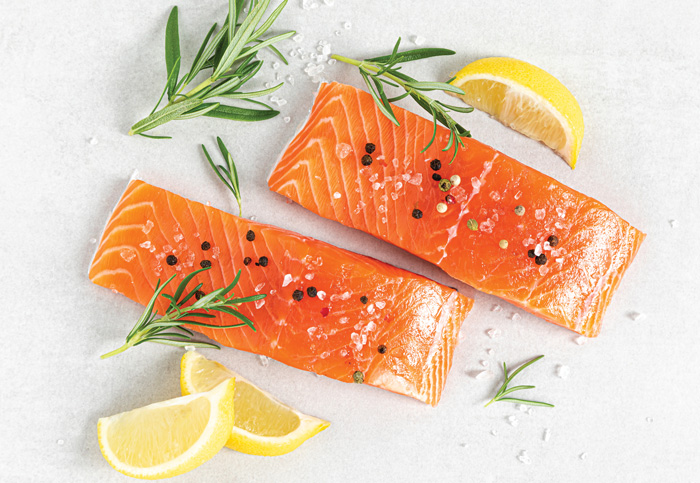Coffee with Milk May Fight Inflammation, Color Makes the Difference
OMNIVORE
RESEARCH
Coffee with milk may fight inflammation
Adding milk to your coffee may have some health benefits, according to two new studies from the University of Copenhagen. The combination of proteins in milk and polyphenols in coffee may have anti-inflammatory effects in immune cells, findings that could one day be applied in food product development, the Danish researchers said.
The first study, published in Food Chemistry in September 2022, examined the binding properties of polyphenols in coffee with the amino acids present in milk using beverages found at a local supermarket. The results showed that the polyphenols and amino acids bonded very quickly.
The second study was published in the Journal of Agricultural and Food Chemistry in January 2023. This research specifically looked at two polyphenols and their reactions with amino acids, which were then applied to immune cells against a control group and a group with only polyphenols. The combination of polyphenols and amino acids had an enhanced anti-inflammatory effect on the immune cells.
Marianne Nissen Lund, a professor of food chemistry in the Department of Food Science at the University of Copenhagen, said she didn’t expect these results. She was involved with both studies and acted as lead researcher in the immune cell study.
“To be honest, I was actually a little bit surprised by the results that we obtained,” she said in an interview with Food Technology. “I would have thought that modifying the phenolic acids would actually have reduced the anti-inflammatory activity, but the fact that we saw the absolute opposite … was thrilling and something that we definitely need to look into further.”
Nissen Lund explained that this research can have future applications for the food industry. Since polyphenols and amino acids are present in food, researchers can study how abundant they are and what amount of them are optimal for humans.
“In the food industry, you can use polyphenols as an ingredient, and then you can tailor the food product to get all of the beneficial effects, both on food quality and health-related aspects,” Nissen Lund said. “So all this knowledge can help us to develop new types of foods that are even more healthy than what we have today.”
Nissen Lund reports that the team has secured funding for animal trials, and based on animal research, hopes to tailor the studies for human trials.
CONSUMERS
Color makes the difference
Consumers have different color preferences for raw animal products in various areas of the world, according to a new review article in the Journal of Food Science.
The review, which comes from the University of Göttingen, breaks down 40 studies from around the world on consumer preferences for unprocessed animal foods, including raw beef, pork, and poultry, as well as honey, milk, and eggs. The researchers note that most people tend to prefer foods with higher chroma and more vivid colors because they associate this with freshness.
According to the review, consumers’ location affected their color preferences for specific foods. For example, consumers in studies in North America and Europe preferred a light red to dark pink color in raw pork, while consumers in Asia preferred a dark red color. The researchers hypothesized that consumers in Asia may see darker meat as more tender while consumers in North America and Europe associate dark color with loss of freshness.
Additionally, consumers in the United States preferred chicken eggs with white eggshells, while consumers in other surveys around the world preferred brown eggshells. The researchers noted that most of the consumers who participated in the studies stated that yolk color was the main indicator of freshness for chicken eggs, but more research needs to be done to determine preferences on yolk color by region.
Preferences for other foods were more uniform. Across the globe, consumers tended to prefer a light red or pink color in ground beef, and they preferred dark golden, yellow, and amber colors in honey. Results for raw poultry were inconclusive due to small sample size.
More research into regional differences in color preferences is needed, the review authors conclude, adding that understanding why certain colors are preferred would allow food developers to better target their marketing efforts.
SUSTAINABILITY
Tacoma tackles food waste
The city of Tacoma, Wash., in partnership with Mill Industries, a waste prevention service provider, is launching a pilot program to address residential food waste where it often starts—in the kitchen.
With this program, every Tacoma resident with a Mill membership will receive a new kitchen bin that dries, shrinks, and deodorizes kitchen scraps overnight. These scraps will be converted into “food grounds,” which can be sent back to Mill and be made into safe and nutritious chicken feed.
Residential food waste is the largest contributor to overall food waste, according to data from ReFED, an American nonprofit focused on the food system. The city of Tacoma began collecting and recycling residential food waste in 2012, allowing residents a convenient method to reduce their waste contributions. The city estimates that it has diverted up to 1,000 tons per year of compostable food from landfills.
“We are proud to be at the forefront of creative public-private solutions to tackle the challenging problem of food waste in landfills,” said Lewis Griffith, Solid Waste Division manager for the city of Tacoma, in a press release. Griffith said Tacoma was the first municipality in the country to pilot such an approach.
Based on preliminary research, Mill estimates that residents can avoid up to a net half-ton of CO2 emissions per household per year. Additionally, the city of Tacoma predicts that residents can save up to $25.60 per month on their waste bill by shifting from curbside collection to the Mill kitchen bin.
Residents can purchase a Mill membership starting at $33 per month. This membership includes the kitchen bin, postal service for the food grounds, access to an app, and technical support.
AQUACULTURE
Farming for benefit
Aquaculture, the farming of aquatic organisms, can help achieve conservation efforts for the environment, according to a new review published in Conservation Biology.
The review, written by researchers from the University of Melbourne, describes the ecological benefits of expanded aquaculture efforts. According to the Food and Agriculture Organization of the United Nations, aquaculture accounted for over 122 million tons of global food production in 2020.
The researchers identified 12 beneficial outcomes of aquaculture: species recovery, biological control, habitat protection, ex-situ conservation, wild harvest replacement, habitat rehabilitation, removal of overabundant species, habitat restoration, coastal defense, bioremediation, assisted evolution, and climate change mitigation.
The review notes that, historically, there has been some disagreement between advocates for aquaculture and advocates for restoration and conservation. There have been some documented negative environmental impacts of aquaculture, including degradation of and destruction of habitats. The researchers note that specific strategies should be employed to curb these negative effects by using specific species of plants and animals.
For example, previous research has shown that an overabundance of sea urchins in certain countries has led to a significant loss of kelp and biodiversity. As a result, capture-based aquaculture operations have been set up to harvest the urchins and transfer them to separate facilities for feeding and sale.
To ensure that aquaculture remains ecologically beneficial, the researchers suggest the implementation of “an internationally recognized accreditation scheme” to encourage commercial industries to use environmentally friendly practices. They also recommend a standardization of key indicators and assessment protocols to achieve more ecologically beneficial aquaculture.
Letters
Sensory Science Leaders Respond to February Article
As a group of practicing sensory and consumer scientists with a collective more than 200 years’ experience, we were excited for the “Next-Generation Sensory Science” article in the February 2023 issue of Food Technology. Sensory science is an ever-evolving field, and we sensory scientists work to evolve the methods and tools that we use as the science unfolds.
The contributions that were cited by Karen Graves on how User Experience is incorporated into the sensory scientist’s job, by Jackie Beckley and Julien Delarue on the importance of in-context evaluation, by Tian Yu on machine learning, and by Joel Mainland on his research with highly trained versus untrained panelists were presented as positive additions to the field, and stressed that they complement tools already in use.
In contrast, some of the quotes by Jason Cohen of Gastrograph were plainly dismissive of sensory science methodologies without providing any evidence or specific examples and were declared as absolutes as opposed to challenges for discussion. The quote, “Conventional consumer testing methodologies don’t represent the broader population and conclusions based on them are often wrong,” is untrue, evidenced by numerous product success stories across a wide range of companies. The quote, “I don’t think that traditional methodologies and sensory science are particularly actionable or useful for product development in the current environment,” is gratuitously scornful of an entire profession of sensory scientists, again without evidence. It is unfortunate that IFT, a global scientific organization, published the latter quote as gospel truth with no data or reasoning. The article should have been reviewed by the Sensory and Consumer Science Division leadership, as well as the quoted references prior to publication.
As scientists, we welcome debate and open and honest dialogue; we do not, however, welcome abject dismissal of methods that have been developed and used over 50-plus years, without evidence or cause.
We are disappointed that Food Technology chose to include these unsubstantiated and insulting phrases in the February issue. We request an apology for publishing them.
Thank you for your consideration.
—Lori Rothman, MS, CFS; Kate Courchane, MS (current chair of the IFT Sensory Consumer Sciences Division); Alden Riak, MS (incoming chair of the IFT Sensory Consumer Sciences Division); Karen Graves, MS (immediate past chair of the IFT Sensory Consumer Sciences Division); Sharon Bender, MS; Joseph Donovan, PhD; Julia Tyrpin, CFS; Chris Van Dongen, PhD; Jeffrey Scott, PhD; Dolores Oreskovich, PhD, MBA; Michael Nestrud, PhD
Category Spotlight
Raising the Bar on Chocolate
Artisan or craft chocolate is gaining ground among discerning consumers who seek nuanced flavors and carefully sourced ingredients. For a close-up look at the trends defining the category, visit iftexclusives.org/craft-chocolate.












